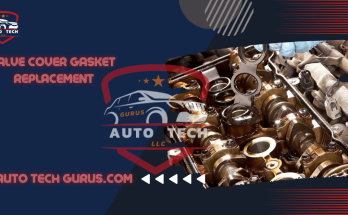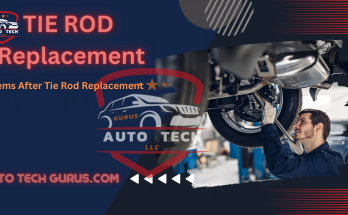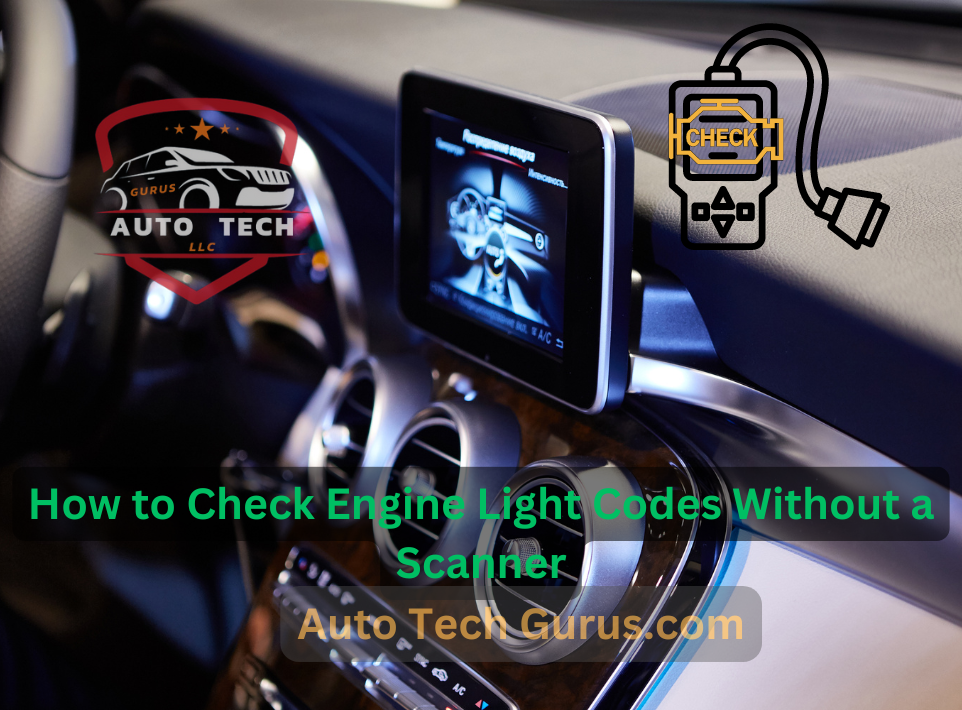Problems After Tie Rod Replacement
The Tie Rods enhance your vehicle’s handling and ensure the steering system operates correctly. Over time, you may need to replace them, which can lead to potential issues following the replacement of the tie rods.
After replacing the tie rods, you may encounter significant problems, including misaligned wheels, uneven tire wear, and steering wheel vibrations. Additionally, you might experience loose steering and notice sensations of wandering or pulling while driving. These issues can result from various factors, such as worn or damaged suspension components, incorrect installation, or other underlying mechanical problems.
Understanding Inner and Outer Tie Rods in a Vehicle’s Steering System
The tie rod plays a pivotal role in a car’s steering system, consisting of two primary components: the inner tie rod and the outer tie rod. The inner tie rod connects to the steering rack. In contrast, the outer tie rod connects to the steering knuckle. These components transform the steering wheel’s rotational input into lateral motion for the front wheels, allowing the driver to effectively control the vehicle’s direction.
Exploring Inner Tie Rods in Automotive Steering Systems
Inner tie rods are a vital element of a vehicle’s steering system, which links the steering rack and the outer tie rods. When inner tie rods become worn or damaged, they can introduce excessive play in the steering mechanism, which poses a significant safety risk by compromising control. Replacing inner tie rods demands specialized tools and expertise. Therefore, entrusting this task to a qualified mechanic who can ensure accurate installation and alignment for optimal safety and performance is advisable.
Enhancing Steering Control for Accuracy and Precision
The inner tie rod is pivotal in delivering accurate and precise steering control. Connecting to the steering rack ensures that the driver’s steering inputs are transmitted directly to the wheels without any slack or delay. This results in a highly responsive and comfortable driving experience.
Simple Replacement
The inner tie rod is a separate component that can be replaced relatively quickly without disassembling the steering rack. Consequently, it represents a more cost-effective repair option than replacing the steering system.
Furthermore, the connection between the inner tie rod and the steering rack enhances the vehicle’s suspension system. Ensures that the steering and suspension systems cooperate seamlessly, ultimately delivering a smoother and more comfortable ride.
Exploring the Role and Function of Outer Tie Rods
Outer tie rods are linked to the steering knuckle and play a vital role in transferring the motion from the inner tie rods to the front wheels of a vehicle. When outer tie rods become worn or damaged, they can result in steering instability, irregular tire wear, and a steering wheel that shakes or vibrates.
Although replacing outer tie rods is generally less intricate than replacing inner tie rods, it is still advisable to have this task carried out by a qualified mechanic. Their expertise ensures correct installation and alignment, vital for the vehicle’s safe and effective operation.
Enhanced Handling Performance
Connecting the outer tie rod to the steering knuckle significantly improves the car’s handling and stability. This connection establishes a direct link between the steering system and the wheels, allowing the driver to control the vehicle precisely, especially when navigating corners.
Furthermore, replacing the outer tie rod is a relatively straightforward process and does not necessitate the replacement of the entire steering system, similar to the inner tie rod. This cost-effective repair option makes it a sensible choice for vehicle maintenance.
Extended Tire Lifespan
A properly operating outer tie rod plays a crucial role in maintaining the correct alignment of the front wheels. This alignment not only enhances tire wear but also extends the lifespan of the tires. Additionally, it contributes to the overall safety and stability of the vehicle on the road, ensuring a smoother and more controlled driving experience.
Common Issues to Watch for After Tie Rod Replacement
Tie rods are critical in a vehicle’s steering system because they link the steering gear to the wheel hub. With time, these rods can experience wear and need replacement to maintain safe and efficient vehicle operation. Nevertheless, it’s crucial to be mindful that issues can emerge following tie rod replacement, and promptly addressing these problems is essential for addressing them.
Certainly, please go ahead and list the typical problems that can occur after replacing tie rods, and I’ll provide explanations for each point in detail.
- Steering Wheel Off-Center: When the steering wheel is not properly centered after tie rod replacement, it can be attributed to incorrect tie rod end installation or inadequate alignment. It is crucial to center the steering wheel and ensure the vehicle tracks straight for safe and comfortable driving. This issue can be rectified by performing a wheel alignment, which will align the front wheels correctly and re-center the steering wheel.
- Uneven Tire Wear: Incorrectly adjusted tie rods can result in uneven tire wear. Uneven tire wear is problematic because it can shorten the lifespan of your tires and potentially compromise vehicle safety. Properly adjusted tie rods ensure the wheels are aligned correctly, distributing the wear evenly across all tires. If you notice uneven tire wear, it’s advisable to have a professional perform wheel alignments to correct the issue and extend the life of your tires.
- Vibration or Shaking: If you experience vibrations or shaking in the steering wheel or the vehicle after tie rod replacement, this may indicate an underlying problem with the steering system. These symptoms could result from misalignment or other issues with the tie rods. Addressing these symptoms is essential, as they can affect driving comfort and safety. A qualified mechanic should inspect the steering system, including the tie rods, to diagnose and rectify the source of the vibration or shaking.
Addressing these problems promptly and correctly is crucial for maintaining safety and performance of your vehicle. Consulting a professional mechanic for proper diagnosis and resolution is highly recommended if you encounter any issues after tie rod replacement.
- Excessive Play in the Steering: Incorrectly performed tie rod replacements can result in excessive play in the steering system. It can make the steering feel loose or imprecise, which is hazardous while driving. Addressing this issue is crucial for maintaining safe vehicle control. Proper installation and alignment of tie rods are essential to ensuring precise steering.
- Strange Noises While Turning: Strange noises during turning after tie rod replacement may signify a problem with the steering system. These noises can result from inadequate lubrication, worn tie rod ends, or incorrect installation. Addressing these noises is essential to prevent further damage and ensure safe operation. A qualified mechanic can inspect and rectify the issue.
- Steering Wheel Hard to Turn: If the steering wheel becomes difficult to turn after tie rod replacement, it could be due to problems with the power steering system or incorrect tie rod end installation. Difficulty in steering can pose challenges, especially during tight or sharp turns, and addressing this issue is crucial for safety and ease of driving.
- Steering Wheel Jerking or Wandering: Jerking or wandering of the steering wheel while driving can indicate problems with the tie rods. It can be caused by worn tie rod ends or improper adjustment, which may lead to safety concerns. Prompt inspection and potential replacement of worn tie rod end and ensuring proper adjustment can resolve this issue.
- Poor Handling or Stability: After tie rod replacement, the vehicle’s handling and stability may suffer if the tie rods are not adjusted correctly. It can make it challenging to control the vehicle, particularly at higher speeds or during turns. Proper adjustment of the tie rods is essential to maintain optimal handling and stability, ensuring safe driving conditions.
These issues underscore the importance of correctly performing tie rod replacement and promptly addressing any problems that may arise. Seeking professional assistance from a qualified mechanic is strongly recommended if you encounter any of these issues after tie rod replacement to ensure the safety and performance of your vehicle.
- Inability to Align the Wheels: If the wheels cannot be properly aligned after tie rod replacement, it may indicate an issue with the tie rods or incorrect installation. This misalignment can result in the vehicle pulling to one side or causing uneven tire wear. Addressing this problem is essential to maintain safe and balanced vehicle operation. Accurate alignment of the wheels is critical for tire longevity and even tire wear.
- Premature Wear of New Tie Rods: More than incorrect installation or adjustment of tie rods during replacement can lead to premature wear of the new tie rods. It could cause further damage to the steering system, requiring additional repairs. Ensuring the proper alignment and installation of tie rods after replacement is crucial to prevent safety concerns and maintain the vehicle’s integrity.
After tie rod replacement, it’s highly advisable to have a professional mechanic handle the replacement and alignment processes. Their expertise and precision will help ensure the best possible outcomes, preserving your vehicle’s safety and performance. Properly maintaining and aligning tie rods is fundamental to the overall health of your vehicle’s steering system.
How Long Do Tie Rods Last and How Often Should They Be Replaced?
Tie rods are critical component of vehicle’s steering system, serving as the linkage between the steering rack and the steering knuckles. Their role is pivotal in maintaining precise and responsive steering control. The longevity of tie rods can fluctuate based on several factors, including the driving conditions to which the vehicle is subjected, the type of vehicle. The quality of the tie rod parts used. Proper maintenance, regular inspections, and prompt replacement when necessary are key to ensuring the continued reliability and safety of the steering system in any vehicle.
However, on average, tie rods can last between 75,000 to 105,000 miles.
Variations in Tie Rod Replacement Among Different Vehicle Types;
The frequency of tie rod replacement can vary based on various factors, including the type of vehicle, its weight, driving conditions, and usage. As you’ve outlined:
- Passenger Cars: Tie rods typically need replacement every 80,000 to 100,000 miles for most passenger cars, but this can differ based on the specific make and model.
- Light Trucks and SUVs: These vehicles usually require more frequent tie rod replacements, around every 50,000 to 75,000 miles, due to their greater weight and the additional stress on the steering system.
- Heavy-duty trucks: Heavy-duty trucks may necessitate even more frequent inspections and replacements, typically every 30,000 miles, owing to their substantial weight and demanding usage.
- Off-Road Vehicles: Off-road vehicles can experience accelerated tie rod wear due to rough terrain. Regular inspections and replacements as needed are recommended.
- Racing Vehicles: Racing vehicles place significant demands on the steering system and tie rods, making frequent inspections and replacement as needed essential for optimal performance and safety.
Indeed, the replacement interval for tie rods is not a one-size-fits-all approach and depends on various factors related to the vehicle’s design and use. Regular inspections and maintenance are vital for ensuring the safety and performance of the steering system in any vehicle.
Telltale Signs of a Failing Inner Tie Rod
The inner tie rod is a crucial component of a car’s steering system, serving as the connection point between the steering rack and outer tie rod. Its role in maintaining stability and precise steering control cannot be overstated.
When the inner tie rod becomes worn or damaged, it can lead to range of problems affecting the vehicle’s control and safety. Some of these problems include:
- Steering Instability: Worn inner tie rods can introduce play in the steering mechanism, causing the steering to feel unstable and imprecise. It can lead to difficulty in maintaining control over the vehicle.
- Uneven Tire Wear: Misaligned or damaged inner tie rods can result in uneven tire wear. Uneven tire wear can shorten the lifespan of tires and compromise safety, especially during adverse road conditions.
- Steering Wheel Vibration: A worn inner tie rod can cause vibrations in the steering wheel, making for a less comfortable and controlled driving experience.
- Difficulty in Steering: The steering may become harder to maneuver with worn inner tie rods, especially during sharp turns or low-speed maneuvers. It can impact the driver’s ability to navigate safely.
- Alignment Issues: Damaged inner tie rods can lead to alignment problems, causing the vehicle to pull to one side or making it challenging to keep it tracking straight.
Given these potential issues, promptly addressing any problems with the inner tie rod is essential. Regular inspections and maintenance can help detect wear and damage early, ensuring the continued safety and performance of the vehicle’s steering system.
Should Both Inner and Outer Tie Rods Be Replaced Concurrently?
You’ve provided some excellent reasons why it’s highly recommended to replace both the inner and outer tie rods simultaneously, even if only one is damaged or worn out. Let’s summarize these key points:
- Symmetry: Inner and outer tie rods play integral roles in the steering system and work together to maintain balanced and smooth steering and handling. Replacing only one tie rod can disrupt this balance, potentially leading to poor handling characteristics and uneven tire wear.
- Cost-Effectiveness: Replacing only one tie rod may initially appear cost-effective, but it can result in higher long-term costs. If the remaining tie rod is not replaced and fails shortly after the first replacement, it will necessitate another repair, incurring additional labor costs and potential inconvenience.
- Safety: Ensuring the safety of your vehicle is of utmost importance. A damaged or worn-out tie rod can significantly compromise the vehicle’s safety, especially regarding steering and handling. Such issues can pose serious safety hazards, particularly at higher speeds.
In light of these considerations, the most prudent and cost-effective choice is to replace the inner and outer tie rods simultaneously, even if it may seem more practical to only address the visibly damaged or worn-out tie rod. This approach ensures that the steering system operates optimally, promoting safety and long-term savings.
The Cost of Replacing Inner and Outer Tie Rods
You’ve provided a comprehensive overview of the factors influencing the cost of replacing the inner and outer tie rods. Here’s a summary of those key points:
1. Cost of Tie Rod Parts: The cost of tie rod parts varies based on the make and model of the vehicle. Inner tie rods are typically more expensive than outer tie rods due to their more intricate design.
2. Labor Costs: Labor costs for tie rod replacement depend on the mechanic’s location and hourly rate. On average, replacing inner and outer tie rods takes around 2.5–3.5 hours of labor.
3. Alignment Costs: a wheel alignment is typically necessary to ensure proper tire wear and handling following tie rod replacement. This alignment service can add cost to the overall replacement process.
Considering these factors, the total cost of replacing inner and outer tie rods can range widely, from $250 to $1,250 or more. Vehicle owners should obtain quotes from reputable mechanics that consider their vehicle’s specific make and model, including any additional alignment costs, to receive an accurate estimate for a replacement job. It will help ensure both the safety and cost-effectiveness of the repair.
My Ideas and Opinions
Replacing the inner and outer tie rods simultaneously is strongly advisable for optimal vehicle performance and safety. This proactive approach helps prevent problems that can arise after tie rod replacement, as tie rods are critical to steering and suspension systems. Any issues can lead to severe accidents or costly damages.
While tie rod replacement can be expensive, neglecting them can result in even more significant long-term costs. Replacing both tie rods together not only prevents the need for additional repairs shortly after the initial replacement. But also ensures the synchronization of the steering and suspension systems, promoting both safety and cost-effectiveness in vehicle maintenance.



